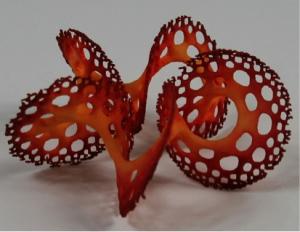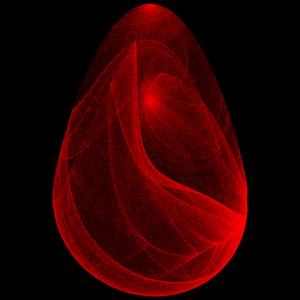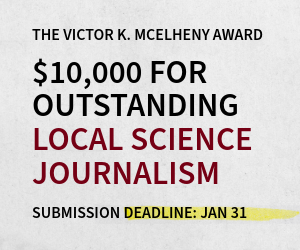By Laura Kross
Mathematical modeling is no longer a tool reserved for scientists. Artists and architects are now using it to create sculptures, abstract graphs and digital seashells that visualize mathematical equations and concepts.
Artists and scientists discussed how mathematical modeling can make beautiful art, lead to a deeper understanding of science and serve as an educational tool during the “Artful Science” session on February 15 at the American Association for the Advancement of Science meeting in Boston.
George Hart’s Echinodermania collection features toroidal forms inspired by the structure of echinoderms, such as starfish. Hart used a laser sintering process to make the sculpture out of nylon and then custom-dyed it. Courtesy of George Hart.There is an artistic aspect to the everyday technology that scientists use, said Robert Krawczyk, professor of architecture at the Illinois Institute of Technology.
“All of us have a desire to artistically express ourselves," he said, explaining that the tools many researchers use for modeling have an artistic sense to them.
Krawczyk has created two-dimensional, blood-red graphs that sweep, twist and fold to form abstract shapes with names like “Within Shell I,” “Touched Stone IV” and “Breaking Wave III.” He developed the designs from equations traditionally used to describe chaotic behavior in weather models and has created pieces that inspire both artists and scientists.
Scientists, mathematicians and other researchers see amazing things on a daily basis that others may not, said Krawczyk. Sharing these perspectives and adapting their tools for creative purposes is the next step, he said.
Mathematics is a creative language for describing physical reality, and modeling can help inform the underlying science, said Jo Ellis-Monaghan, a professor of mathematics at Saint Michael's College.
“Touched Stone IV” from Robert Krawczyk’s Dimension of Time in Strange Attractors collection — created by running a series of related strange attractor equations with a color scheme to represent time. Courtesy of Robert Krawczyk.Monaghan uses mathematical equations and computer modeling to re-create seashell structures. Quantifying the structure and graphically representing it helps scientists understand architectural forms, including the shapes of extinct organisms based on their fossilized shells.
“Looking at nature through patterns and structures can lead to a greater understanding of the underlying math,” said George Hart, an independent sculptor based in Stony Brook, New York. His recent sculptures apply mathematical concepts to create shapes inspired by undersea forms.
“Taking cool math ideas, making them physical, and creating structures needs a coolness factor. If you want to pick [the sculpture] up, I consider that successful,” Hart said.
Mathematics is a lens that allows scientists and artists to see better because there is a clear idea of what to measure or test, said John Jungck, director of interdisciplinary science learning laboratories at the University of Delaware and editor of the BioQUEST library. He argued that professors should also use art and mathematical modeling in the classroom to give students a way to perceive meaning in their work.
“I want [students] to see in a new way,” Jungck said. “I want to argue that students, by doing something, by measuring, testing hypotheses and then by modeling have a much deeper understanding of how patterns and forms come about.”
Laura Kross is a senior at the University of Idaho studying environmental science and journalism. She most recently interned with Detroit Public Television’s National Documentary Unit blogging about renewable energy for the “Beyond the Light Switch” documentary feature: http://www.beyondthelightswitch.com/blog. Visit her webpage at http://laurakrossprofile.weebly.com/ or reach her at laura.kross@gmail.com.





